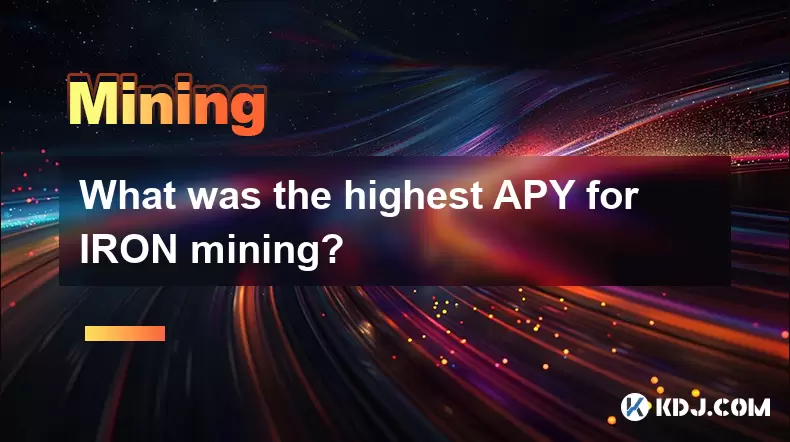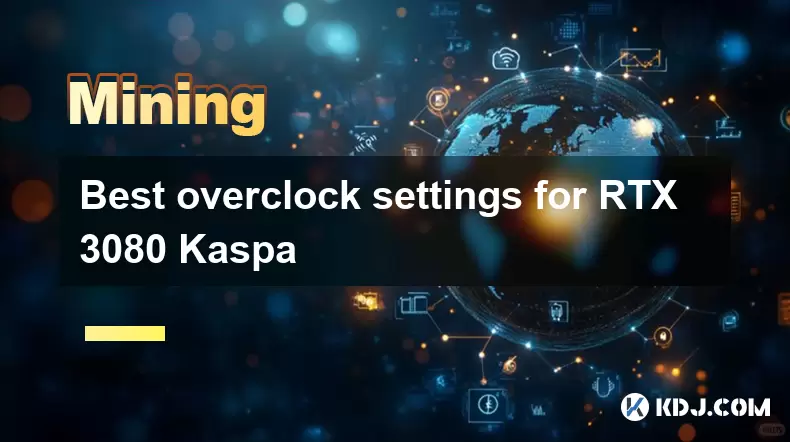-
 Bitcoin
Bitcoin $118900
1.66% -
 Ethereum
Ethereum $3735
1.35% -
 XRP
XRP $3.506
0.71% -
 Tether USDt
Tether USDt $1.000
-0.01% -
 BNB
BNB $799.4
5.78% -
 Solana
Solana $202.0
1.87% -
 USDC
USDC $0.9999
0.00% -
 Dogecoin
Dogecoin $0.2661
1.89% -
 Cardano
Cardano $0.8877
1.59% -
 TRON
TRON $0.3173
2.45% -
 Hyperliquid
Hyperliquid $45.00
2.59% -
 Stellar
Stellar $0.4723
3.40% -
 Sui
Sui $3.970
1.32% -
 Chainlink
Chainlink $19.67
1.94% -
 Hedera
Hedera $0.2710
1.99% -
 Avalanche
Avalanche $25.74
-0.01% -
 Bitcoin Cash
Bitcoin Cash $528.1
1.98% -
 Litecoin
Litecoin $120.1
3.57% -
 Shiba Inu
Shiba Inu $0.00001525
1.26% -
 UNUS SED LEO
UNUS SED LEO $8.989
-0.01% -
 Toncoin
Toncoin $3.304
1.74% -
 Polkadot
Polkadot $4.531
3.38% -
 Uniswap
Uniswap $10.74
2.51% -
 Ethena USDe
Ethena USDe $1.001
0.00% -
 Monero
Monero $325.5
2.44% -
 Pepe
Pepe $0.00001413
1.31% -
 Bitget Token
Bitget Token $4.860
0.85% -
 Dai
Dai $0.9999
0.01% -
 Aave
Aave $307.3
-2.07% -
 Bittensor
Bittensor $448.8
2.91%
How to start mining KAS for beginners?
Kaspa (KAS) uses a blockDAG structure and 1-second block times, enabling high-speed mining via ASICs using the kHeavyHash algorithm.
Jul 23, 2025 at 09:29 am

Understanding KAS and Its Mining Mechanism
KAS refers to the native cryptocurrency of the Kaspa network, a blockchain platform designed to solve scalability issues through a unique blockDAG (Directed Acyclic Graph) structure. Unlike traditional blockchains that process one block at a time, Kaspa allows multiple blocks to be created simultaneously, increasing transaction throughput. This architecture supports faster block times—every second, compared to minutes in Bitcoin—making it highly efficient. The consensus mechanism used by Kaspa is Proof of Work (PoW), which means mining plays a crucial role in securing the network and validating transactions.
Mining KAS involves using computational power to solve cryptographic puzzles. Miners who successfully add a block to the blockDAG are rewarded with newly minted KAS coins. Because of the 1-second block time, the network processes significantly more blocks per hour than traditional chains, offering more frequent reward opportunities. However, this also means the network adjusts difficulty more frequently to maintain stability.
Choosing the Right Mining Hardware
To mine KAS efficiently, you must select appropriate hardware. Currently, the most effective way to mine Kaspa is through ASIC (Application-Specific Integrated Circuit) miners. These devices are specifically designed for cryptocurrency mining and offer vastly superior performance over general-purpose hardware like CPUs or GPUs.
Popular ASIC models compatible with Kaspa include:
- Innosilicon A10X
- BlockMasters BM-K230
- Ibelink KS-3
These ASICs are optimized for the kHeavyHash algorithm, which is a modified version of HeavyHash tailored for Kaspa’s unique structure. Before purchasing, verify that the ASIC explicitly supports kHeavyHash, as not all HeavyHash-compatible devices are updated for Kaspa’s protocol.
Ensure your mining setup includes:
- A stable power supply unit (PSU) rated for the ASIC’s wattage
- Adequate cooling and ventilation due to high heat output
- A reliable internet connection to maintain node synchronization
Setting Up a KAS Wallet
Before mining, you need a secure wallet to receive and store your KAS rewards. The official Kaspa Wallet is available as a desktop application and supports cold storage and hardware wallet integration. Download the wallet from the official Kaspa website to avoid phishing or malware.
Steps to set up the wallet:
- Visit the official Kaspa GitHub repository or kaspa.org
- Download the wallet version compatible with your operating system (Windows, macOS, Linux)
- Install the application and launch it
- Choose "Create a New Wallet"
- Set a strong password and securely back up your 12-word recovery phrase
- Confirm the backup by re-entering the seed phrase
- Once created, your KAS address will be displayed; this is where mining rewards will be sent
Keep the recovery phrase offline and never share it. Without it, you cannot recover your wallet if the device fails.
Configuring a Mining Rig with a Mining Pool
Solo mining KAS is impractical for beginners due to the high competition and low probability of finding a block individually. Joining a mining pool increases your chances of earning consistent rewards by combining computational power with other miners.
Recommended Kaspa mining pools include:
- Suprnova (kaspa.suprnova.cc)
- 2Miners (2miners.com/kas)
- KaspaPool (kaspa.farm)
To configure your ASIC for a mining pool:
- Access the ASIC’s web interface via its local IP address (e.g., 192.168.1.100)
- Log in using the default credentials (often root/admin)
- Navigate to the Miner Configuration section
- Enter the pool URL, port, worker name, and wallet address
- Example pool URL:
stratum+tcp://pool.kaspa.farm:4416 - Worker name:
your_wallet_address.worker1
- Example pool URL:
- Save settings and restart the miner
After rebooting, the ASIC will connect to the pool and begin hashing. Monitor the dashboard to ensure hashrate is stable and accepted shares are being reported.
Monitoring and Optimizing Mining Performance
Once your miner is running, continuous monitoring ensures optimal performance and identifies issues early. Most ASICs provide a built-in web interface showing real-time data such as:
- Current hashrate (in MH/s)
- Temperature of chips and board
- Power consumption (in watts)
- Network connection status
- Accepted vs. rejected shares
To optimize efficiency:
- Adjust frequency and voltage settings (if firmware allows) to balance power use and output
- Keep ambient temperature below 30°C to prevent thermal throttling
- Update the ASIC’s firmware regularly for performance improvements
- Use third-party tools like Awesome Miner or Minerstat to manage multiple devices
Ensure your internet connection remains stable. Frequent disconnections can lead to rejected shares and reduced payouts.
Calculating Profitability and Managing Costs
Mining KAS requires evaluating electricity costs, hardware efficiency, and current KAS price to determine profitability. Use online calculators such as WhatToMine or Kaspa’s official profitability tool.Input the following:
- ASIC hashrate (e.g., 1200 MH/s)
- Power consumption (e.g., 1200W)
- Electricity cost per kWh (e.g., $0.10)
- Pool fees (typically 0.9% to 1%)
- Current KAS price in USD
The calculator estimates daily KAS earnings and net profit after electricity. For example, an Innosilicon A10X consuming 1200W at $0.10/kWh may generate ~0.5 KAS/day, yielding a net profit if KAS remains above a certain threshold.
Track your actual earnings through the mining pool’s dashboard, which shows:
- Total KAS mined
- Pending and paid balances
- Historical hashrate graphs
- Payout thresholds and frequency
Frequently Asked Questions
Can I mine KAS with a GPU or CPU?
While early versions of Kaspa allowed GPU mining, the network has evolved to favor ASICs due to increased difficulty. Mining with a GPU or CPU is no longer profitable because the hashrate is too low to compete with ASICs. Attempting to mine with consumer hardware will consume more electricity than the value of KAS earned.What happens if my ASIC overheats?
Overheating can cause thermal throttling, reducing hashrate, or permanent hardware damage. Most ASICs have built-in protection that shuts down the device if temperatures exceed safe limits. Ensure proper airflow, use fans or air conditioning, and avoid enclosing the miner in tight spaces.How often are KAS rewards paid out?
Payout frequency depends on the mining pool. Some pools like 2Miners pay out daily or when a threshold is reached (e.g., 1 KAS), while others may have higher minimums. Check your pool’s payout policy in the dashboard under "Payment Settings".Is mining KAS legal in my country?
Cryptocurrency mining legality varies by jurisdiction. In most countries, mining is legal, but some regions impose restrictions on energy usage or require licensing. Verify local regulations with government or tax authorities before starting. Always comply with electricity usage laws and report income if required.
Disclaimer:info@kdj.com
The information provided is not trading advice. kdj.com does not assume any responsibility for any investments made based on the information provided in this article. Cryptocurrencies are highly volatile and it is highly recommended that you invest with caution after thorough research!
If you believe that the content used on this website infringes your copyright, please contact us immediately (info@kdj.com) and we will delete it promptly.
- ONDO ETF Incoming? 21Shares and the Coinbase Custody Connection
- 2025-07-23 14:30:12
- Check Your Change! UK Coins Worth £40,000 Could Be Hiding in Plain Sight
- 2025-07-23 14:50:12
- PNC Bank & Coinbase: A New York Minute on Crypto Services Partnership
- 2025-07-23 14:50:12
- Crypto, India, and the COINS Act: A New Dawn for Digital Assets?
- 2025-07-23 14:55:12
- IREN's Bitcoin Mining Prowess Meets AI: An SOTP Valuation Deep Dive
- 2025-07-23 12:30:12
- Arca, PENDLE, and Kraken: Navigating DeFi's Institutional Currents
- 2025-07-23 11:10:11
Related knowledge

What was the highest APY for IRON mining?
Jul 23,2025 at 05:14am
Understanding IRON Token and Its Mining MechanismThe IRON token is a stablecoin that operates within the Iron Finance ecosystem, primarily on blockcha...

What is impermanent loss in IRON pools?
Jul 23,2025 at 09:00am
Understanding Impermanent Loss in the Context of IRON PoolsImpermanent loss is a phenomenon that affects liquidity providers in decentralized finance ...

How to claim rewards from IRON mining?
Jul 23,2025 at 02:21pm
Understanding IRON Mining and Reward MechanismsIRON Finance operated as a decentralized finance (DeFi) protocol on the Polygon and Binance Smart Chain...

How to calculate KAS mining return on investment (ROI)?
Jul 23,2025 at 10:14am
Understanding KAS Mining and ROI BasicsCalculating the return on investment (ROI) for KAS (Kaspa) mining requires a clear understanding of both the mi...

How to join a Kaspa mining pool?
Jul 23,2025 at 08:36am
Understanding Kaspa and Its Mining MechanismKaspa is a high-performance blockchain that utilizes a unique blockDAG (Directed Acyclic Graph) structure,...

Best overclock settings for RTX 3080 Kaspa
Jul 23,2025 at 10:21am
Understanding the Role of GPUs in Cryptocurrency MiningCryptocurrency mining relies heavily on the computational power of graphics processing units (G...

What was the highest APY for IRON mining?
Jul 23,2025 at 05:14am
Understanding IRON Token and Its Mining MechanismThe IRON token is a stablecoin that operates within the Iron Finance ecosystem, primarily on blockcha...

What is impermanent loss in IRON pools?
Jul 23,2025 at 09:00am
Understanding Impermanent Loss in the Context of IRON PoolsImpermanent loss is a phenomenon that affects liquidity providers in decentralized finance ...

How to claim rewards from IRON mining?
Jul 23,2025 at 02:21pm
Understanding IRON Mining and Reward MechanismsIRON Finance operated as a decentralized finance (DeFi) protocol on the Polygon and Binance Smart Chain...

How to calculate KAS mining return on investment (ROI)?
Jul 23,2025 at 10:14am
Understanding KAS Mining and ROI BasicsCalculating the return on investment (ROI) for KAS (Kaspa) mining requires a clear understanding of both the mi...

How to join a Kaspa mining pool?
Jul 23,2025 at 08:36am
Understanding Kaspa and Its Mining MechanismKaspa is a high-performance blockchain that utilizes a unique blockDAG (Directed Acyclic Graph) structure,...

Best overclock settings for RTX 3080 Kaspa
Jul 23,2025 at 10:21am
Understanding the Role of GPUs in Cryptocurrency MiningCryptocurrency mining relies heavily on the computational power of graphics processing units (G...
See all articles

























































































